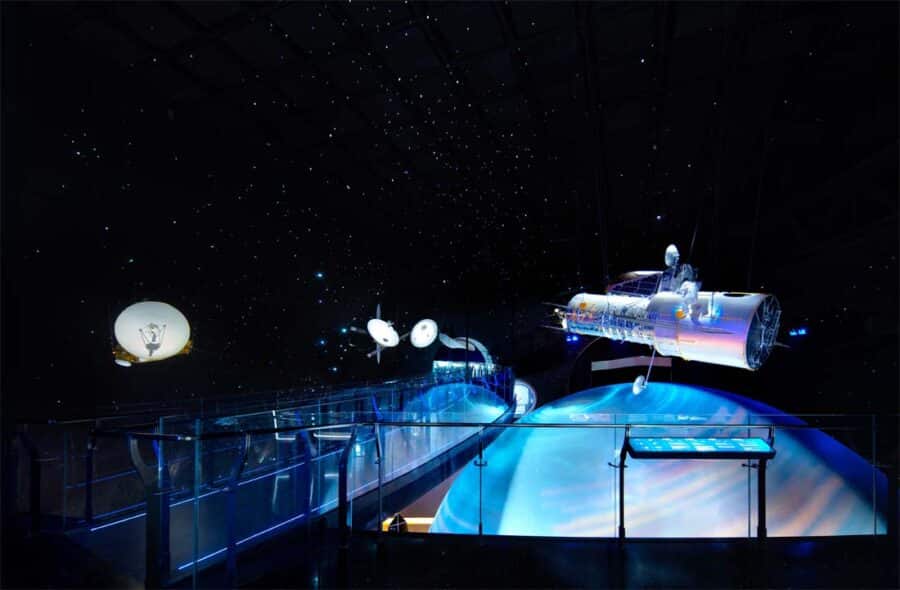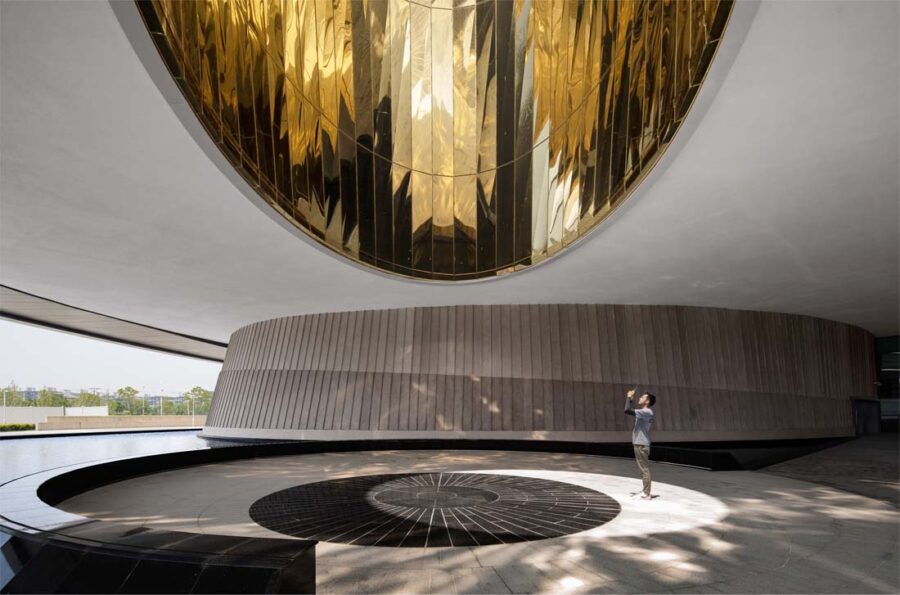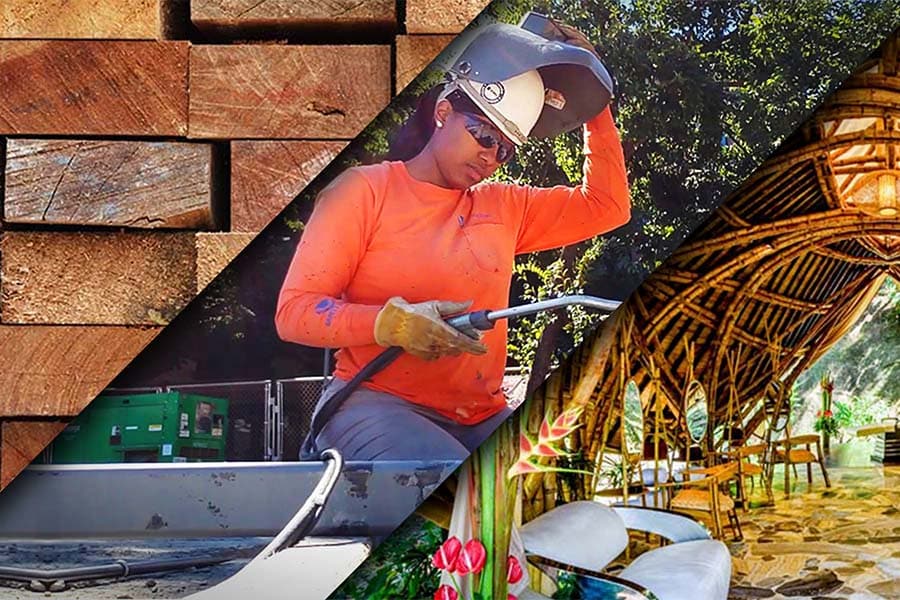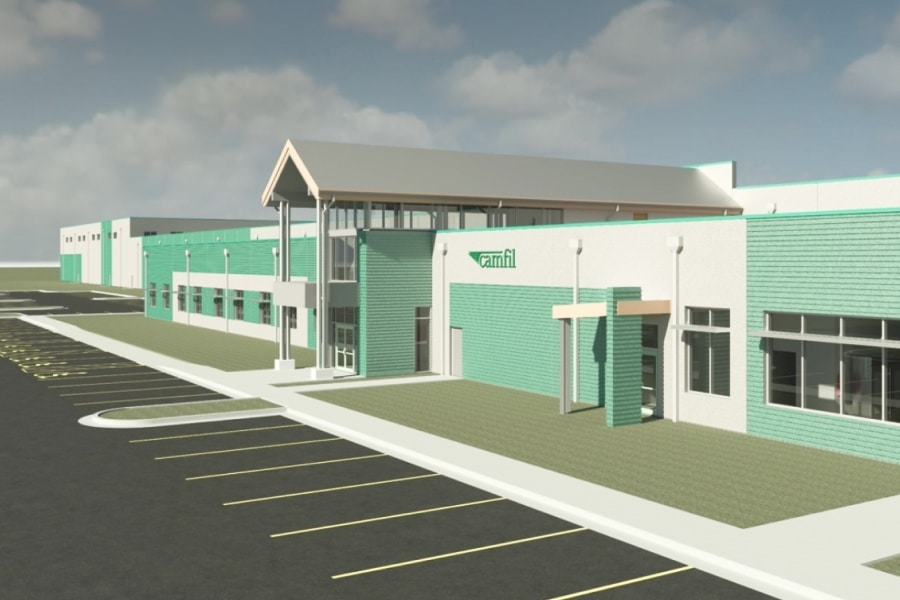The Shanghai Astronomy Museum is out of this world.
Since it opened in August 2021, the museum—the world’s largest dedicated to the science of astronomy—has received accolades for the unique way its design allows visitors to feel like they are actually walking among the stars.
The Built Blog sat down with Ennead Architects design partner Thomas J. Wong to learn more about the process of designing this immersive structure and the unique approach the Ennead team took to creating an earthbound exploration of the wonders of space.
Finding inspiration in the stars
From the beginning of the design process, Wong’s team delved deeply into the science of astronomy to direct its design choices. “The inspiration for the museum’s design was drawn from our extensive research into the universe and the cosmos,” Wong said. “Nothing has more potential for incredible, awe-inspiring content than the vastness and mystery of space.”
When the time came to translate that research into structural form, Wong wanted to pay homage to the way civilizations of the past used monumental architecture to represent their connection to the stars.

“Many cultures used to be far more attuned to the reliance on astronomical phenomena to shape their very existence,” Wong said. “Think about the solar alignments of Teotihuacan or Stonehenge or the Pyramids at Giza, the metaphorical connections made between earth and sky at the Temple of Heaven. These were the references that we really sought to evoke.”
Fundamentally, Wong said the team wanted visitors to the Shanghai Astronomy Museum to experience the same sense of wonder the citizens of these ancient civilizations felt as they contemplated the stars.
“The museum is a place where I hope visitors will be reminded of an important universal perspective: where we humans sit in relation to the existence of all things, both near and impossibly distant,” he said. “For all visitors and audience members, we hoped to expand the modern human perspective, to create an experience that strengthens our awareness of the realm beyond our planet and illuminates our place in the universe.”
An immersive atmosphere
How is it possible to translate such lofty educational and emotional goals into a usable space? The key for Wong and his team lay in the possibilities of immersive architecture.
“The immersive aspect of the museum is a foundational principle in all of our work—to connect the building closely to purpose and utilizing form and space to maximize the human experience,” Wong said. “The museum is filled with incredible immersive exhibits, artifacts and instruments of space exploration focusing on a range of themes and topics related to the universe and our solar system. The museum experience culminates in an amazing journey into the stars in the immersive digital planetarium theater.”
Wong wanted the building’s very basic structure to evoke a sense of motion that would reflect the universe’s constant expansion since the Big Bang, the prevailing cosmological model that explains the existence of the observable universe.

“The building design originates from the dynamic energy of celestial movement,” he said. “Invoking the experience of orbital motion, each of the building’s three principal components—the Oculus, Inverted Dome and Sphere—act as an astronomical instrument, tracking the sun, moon and stars.”
“My greatest aspiration for this museum is to stir our thoughts beyond the human construct, to encourage us to transcend our divisions and obsessions, and to examine ourselves individually and collectively in light of the fact that we are all together in a fragile, irreplaceable lifeboat floating in the limitless void of space: the Pale Blue Dot,” Wong added. “By simulating the experience of orbital motion, and designing each form of the museum to track the movement of the sun through the sky, we have created a building that teaches visitors more about the universe through an architecture that reinforces the monumentality and grandeur of the museum’s subject matter. The museum heightens visitors’ attention to forces beyond our daily awareness.”
Constructing the cosmos
With all of these theoretical elements in place, Wong and his team had to determine the techniques and materials necessary to give its vision form.
“The materiality of the design is actually quite simple and intentionally spare,” Wong said. “There are two primary materials on the exterior: a glass-fiber reinforced concrete panel (as well as cast-in-place concrete in some areas) and faceted anodized aluminum panels. These two materials were meant to be in contrast: one massive, rawer, grounded and tied to the earth, while the other was highly machined, reflective and shimmering toward the sky.”

“The building’s form is unique—the entire structure has no right angles or straight lines, a purposeful choice meant to echo the conditions of space,” Wong explained. “Structurally, it presented an immense challenge to actualize something as geometrically ambitious. We coordinated very closely with the engineers and construction team using digital modelling to map out where things would be in the three-dimensional space.”
Because of the extreme geometry of the structure, Wong said the team had to get creative when the time came to develop the construction techniques that would best suit this unique design.
“One of the most technically difficult aspects of the building was the cantilever at the entry,” he said. “We wanted the cantilever to mirror the building’s form. Originally, the structural engineers proposed conventional, straight steel trusses to support it, but we worked closely alongside them to conceptualize a curved, belt truss solution. Installing the cantilever itself was an immense technical challenge—we had to install and build the structure with temporary supports. The day they were removed was incredibly tense, but thrilling.”
A vision takes form
As the initial engineering stages were completed, Wong said that it was thrilling to watch the team’s vision take form. “The construction process was indeed an exciting one and there were days where I was simply awestruck at the project coming to reality,” he said.

One of the most rewarding parts of the building process was the construction of the museum’s central atrium. “I clearly remember a visit when the atrium was still under construction when the muscle of the concrete tripod and the steel skeleton of the spiraling ramp were all evident and flooded with light from above,” Wong said.
“These features, combined with the raw state of the construction process around them—the atrium was filled with partially dismantled steel scaffolding and sparks were flying through the air from a welder—left me speechless. It felt like walking into one of the great cathedrals of the world, where you are awestruck by the magic and the magnitude of the place. It was at this moment that I understood the power and potential of the museum.”












